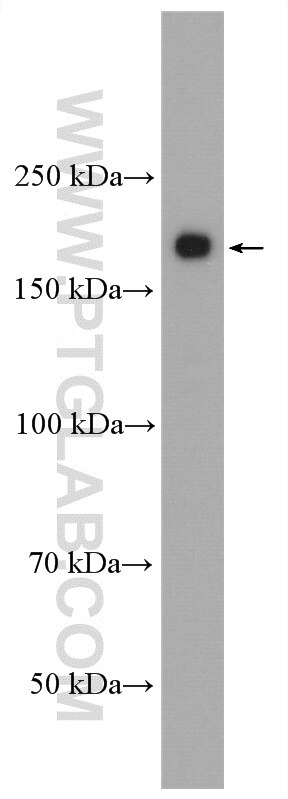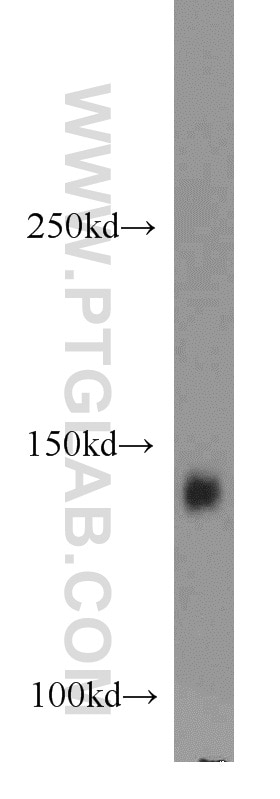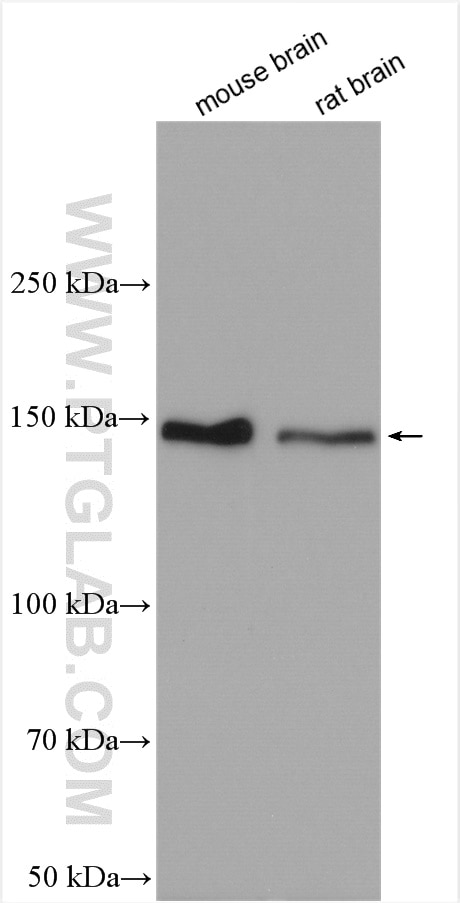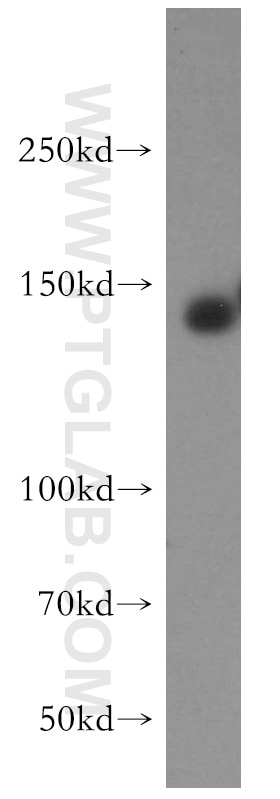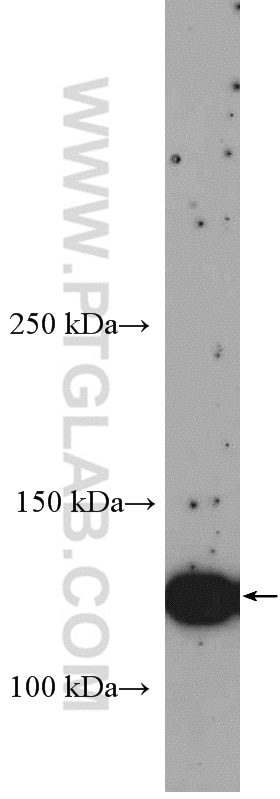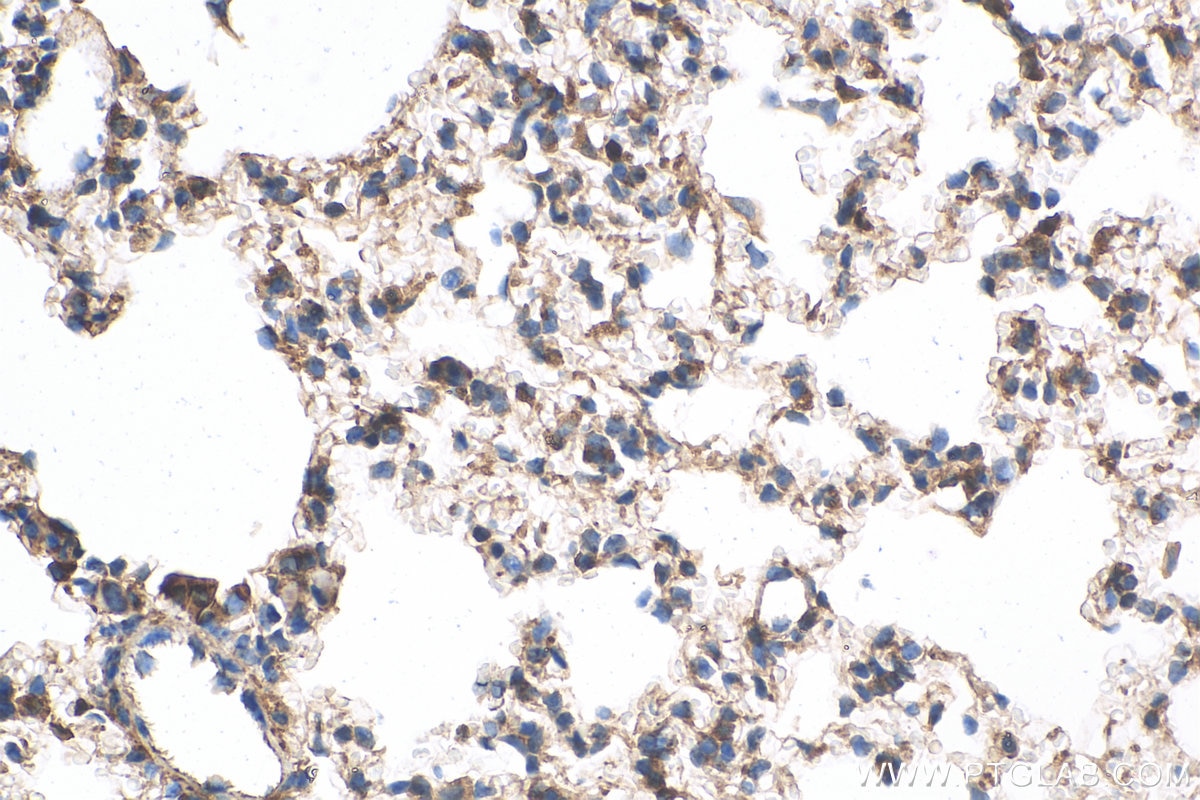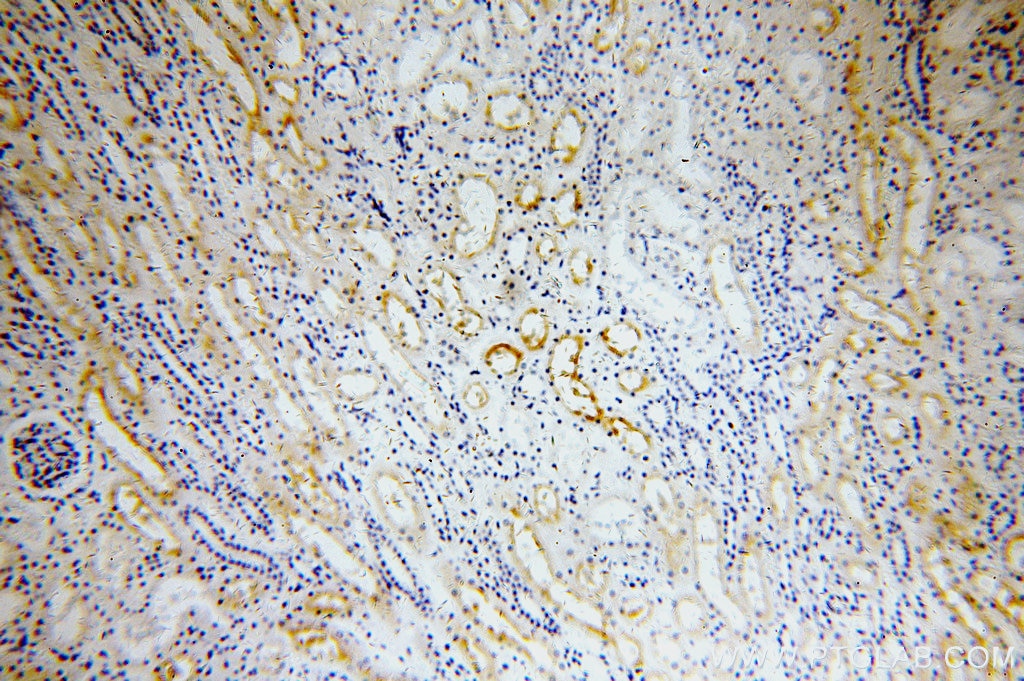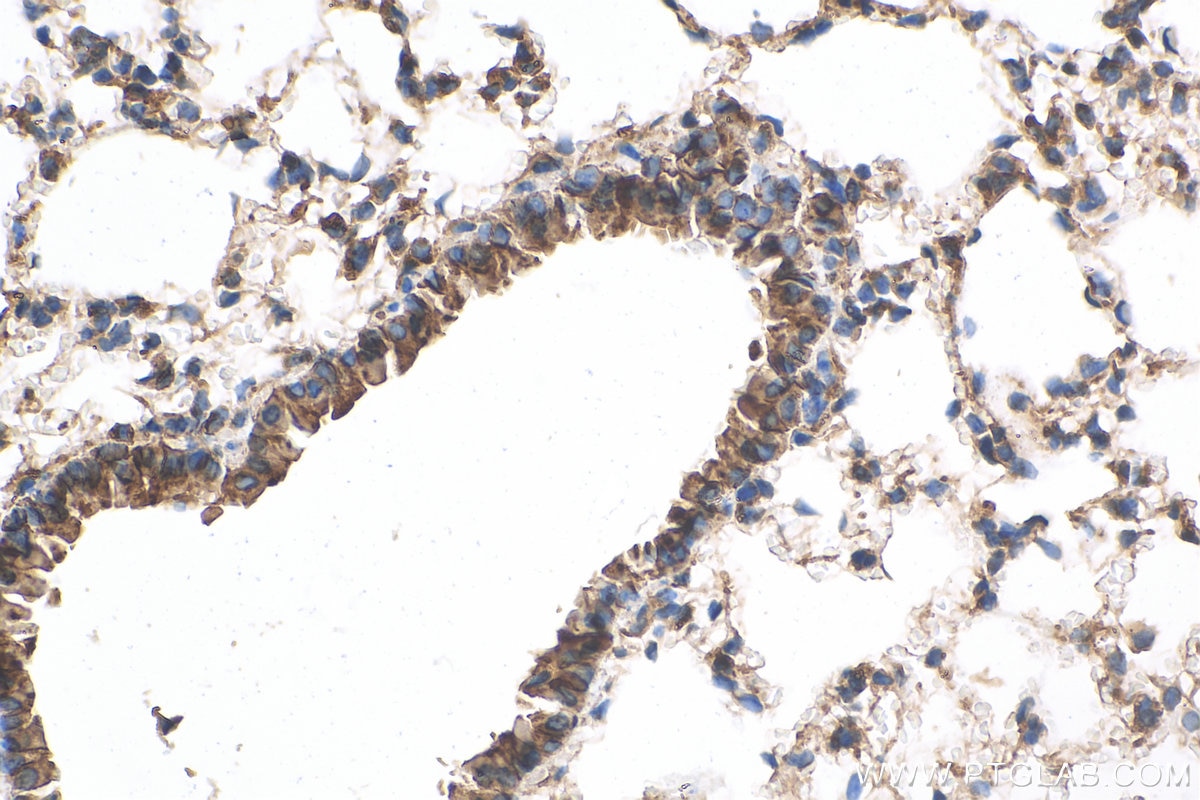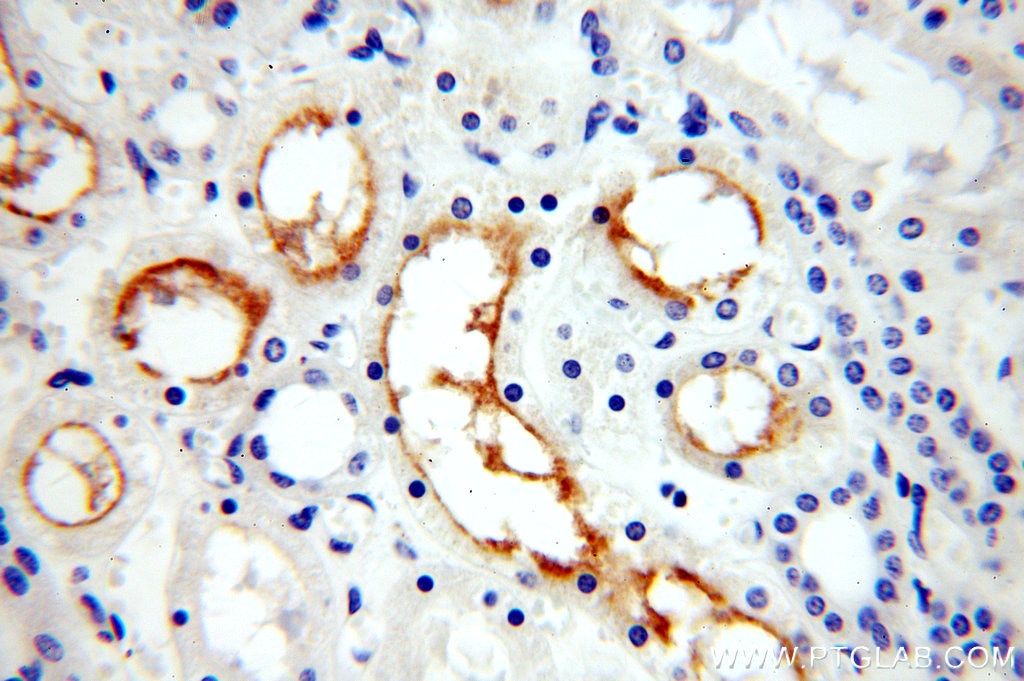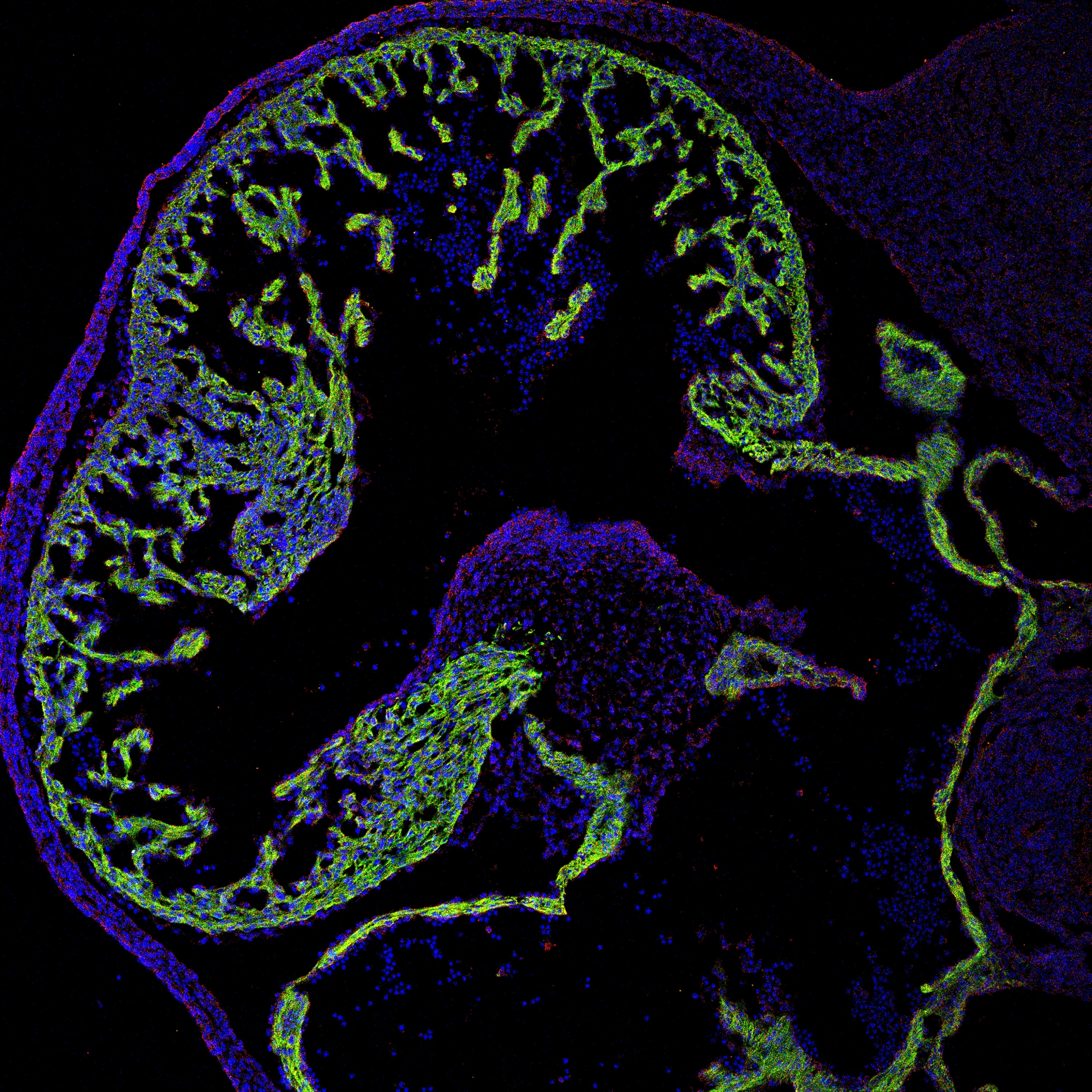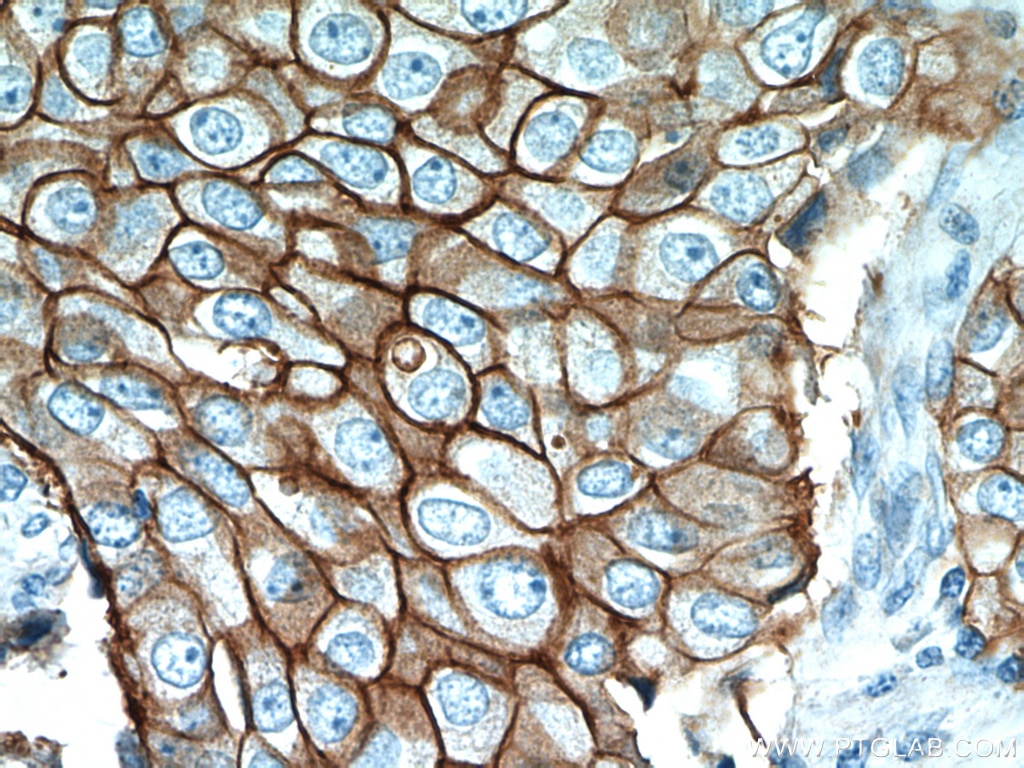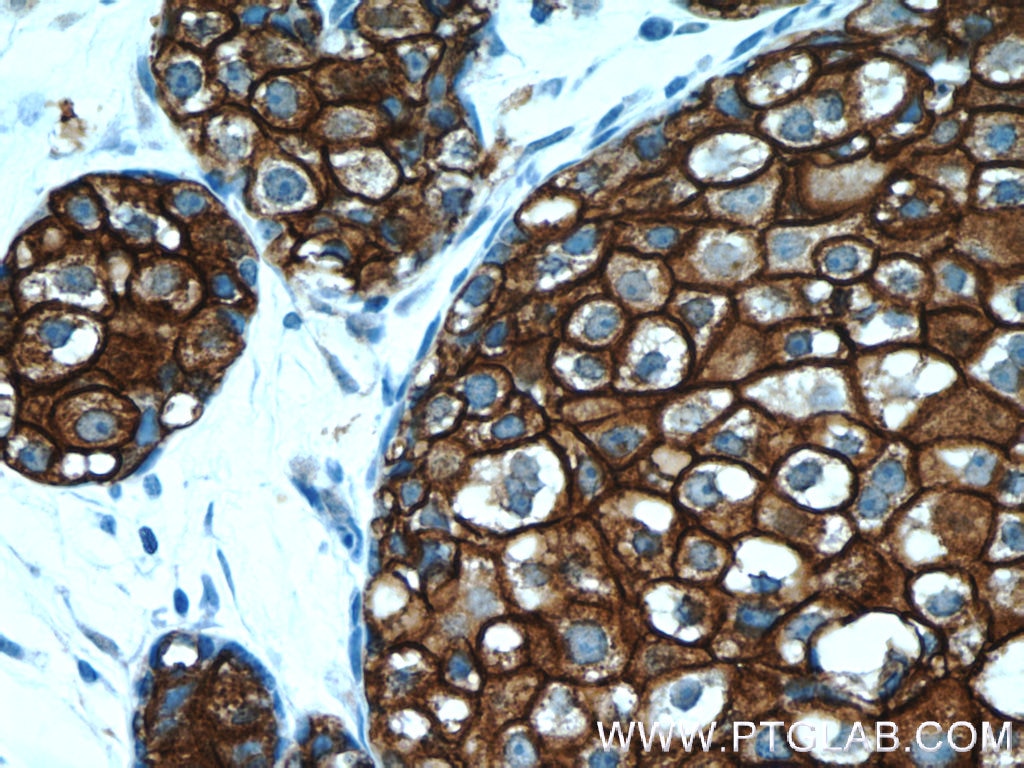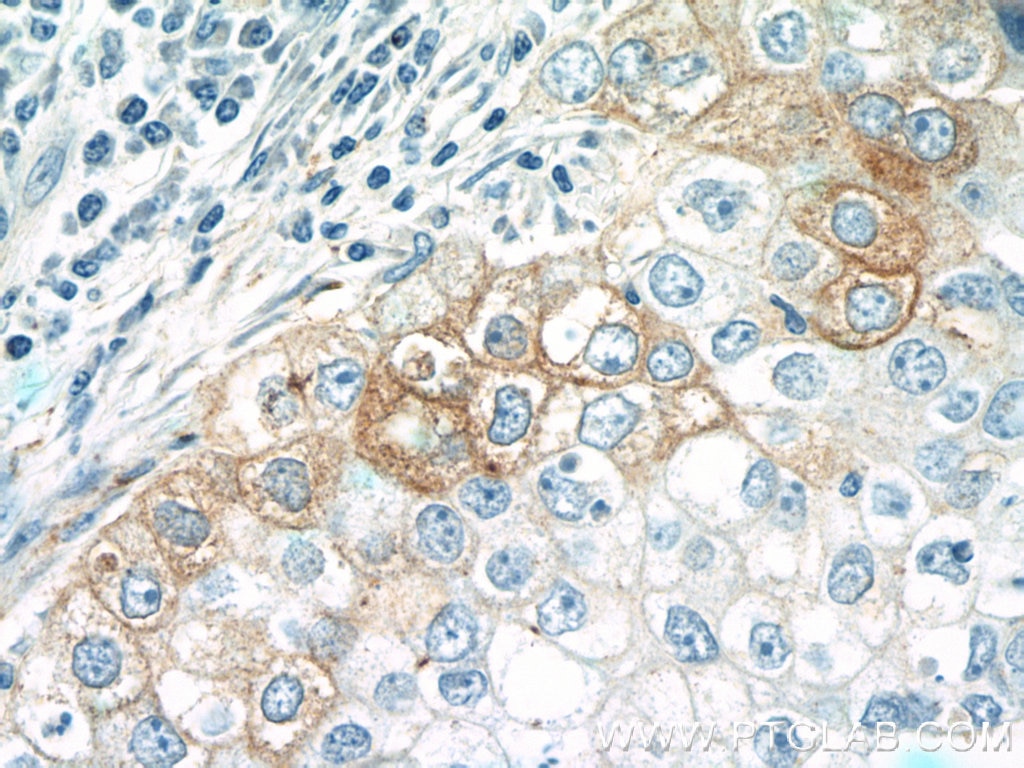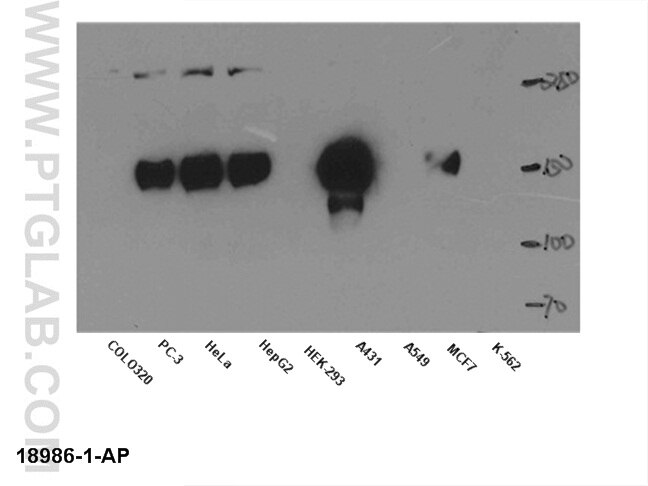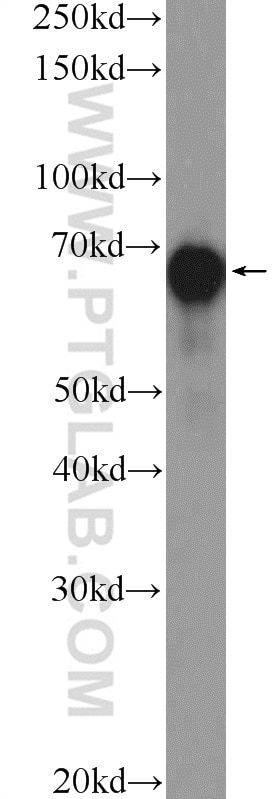Anticorps Polyclonal de lapin anti-ERBB4
ERBB4 Polyclonal Antibody for WB, IHC, ELISA
Hôte / Isotype
Lapin / IgG
Réactivité testée
Humain, rat, souris et plus (1)
Applications
WB, IF, IHC, ELISA
Conjugaison
Non conjugué
N° de cat : 19943-1-AP
Synonymes
Galerie de données de validation
Applications testées
| Résultats positifs en WB | tissu cérébral de souris, cellules MCF-7, tissu cérébral de rat |
| Résultats positifs en IHC | tissu pulmonaire de souris, tissu rénal humain il est suggéré de démasquer l'antigène avec un tampon de TE buffer pH 9.0; (*) À défaut, 'le démasquage de l'antigène peut être 'effectué avec un tampon citrate pH 6,0. |
Dilution recommandée
| Application | Dilution |
|---|---|
| Western Blot (WB) | WB : 1:200-1:1000 |
| Immunohistochimie (IHC) | IHC : 1:50-1:500 |
| It is recommended that this reagent should be titrated in each testing system to obtain optimal results. | |
| Sample-dependent, check data in validation data gallery | |
Applications publiées
| WB | See 11 publications below |
| IHC | See 2 publications below |
| IF | See 2 publications below |
Informations sur le produit
19943-1-AP cible ERBB4 dans les applications de WB, IF, IHC, ELISA et montre une réactivité avec des échantillons Humain, rat, souris
| Réactivité | Humain, rat, souris |
| Réactivité citée | Humain, porc, souris |
| Hôte / Isotype | Lapin / IgG |
| Clonalité | Polyclonal |
| Type | Anticorps |
| Immunogène | Peptide |
| Nom complet | v-erb-a erythroblastic leukemia viral oncogene homolog 4 (avian) |
| Masse moléculaire calculée | 147 kDa |
| Poids moléculaire observé | 180 kDa, 147 kDa |
| Numéro d’acquisition GenBank | NM_001042599 |
| Symbole du gène | ERBB4 |
| Identification du gène (NCBI) | 2066 |
| Conjugaison | Non conjugué |
| Forme | Liquide |
| Méthode de purification | Purification par affinité contre l'antigène |
| Tampon de stockage | PBS avec azoture de sodium à 0,02 % et glycérol à 50 % pH 7,3 |
| Conditions de stockage | Stocker à -20°C. Stable pendant un an après l'expédition. L'aliquotage n'est pas nécessaire pour le stockage à -20oC Les 20ul contiennent 0,1% de BSA. |
Informations générales
ERBB4, also named p180erbB4 and HER4, belongs to the protein kinase superfamily, Tyr protein kinase family, and EGF receptor subfamily. ERBB4 specifically binds and it is activated by neuregulins, NRG-2, NRG-3, heparin-binding EGF-like growth factor, betacellulin, and NTAK. Interaction with these factors induces cell differentiation. ERBB4 is not activated by EGF, TGF-A, and amphiregulin. ERBB4 catalyzes the reaction: ATP + a [protein]-L-tyrosine = ADP + a [protein]-L-tyrosine phosphate. The antibody recognizes the C-term of ERBB4. Alternatively spliced variants that encode different protein isoforms with a calculated molecular weight of 144-147 kDa have been described. The apparent molecular weight of full-length ERBB4 is 150-200 kDa due to glycosylation and phosphorylation. Full-length ERBB4 can be cleaved into an 80-kDa ERBB4 intracellular fragment and a 120-kDa extracellular fragment (PMID: 11343971; 16251361).
Protocole
| Product Specific Protocols | |
|---|---|
| WB protocol for ERBB4 antibody 19943-1-AP | Download protocol |
| IHC protocol for ERBB4 antibody 19943-1-AP | Download protocol |
| Standard Protocols | |
|---|---|
| Click here to view our Standard Protocols |
Publications
| Species | Application | Title |
|---|---|---|
Adv Sci (Weinh) Neuregulin4 Acts on Hypothalamic ErBb4 to Excite Oxytocin Neurons and Preserve Metabolic Homeostasis | ||
J Neuroinflammation EGFR transactivation contributes to neuroinflammation in Streptococcus suis meningitis. | ||
Cell Mol Neurobiol Identifying Genes that Affect Differentiation of Human Neural Stem Cells and Myelination of Mature Oligodendrocytes | ||
DNA Cell Biol AK003290 Protects Myocardial Cells Against Apoptosis and Promotes Cardiac Function Recovery Via miR-539-3p/ErbB4 Axis in Ischemic-Reperfusion Injury. |
